Within Google Analytics 4, accessing information about 404 pages is straightforward. You’ll need to generate an exploration report for a comprehensive analysis of the internet’s most well-known error. However, it’s important to note that not all 404 errors merit your attention, as not everything that appears as “not found” is genuinely lost.
Key takeaways
- A 404 server error occurs when visitors access a non-existing web page, prompting the display of a 404 page to inform and guide them.
- GA4 provides insights into 404 pages through custom exploration reports, aiding in analysing data related to these errors.
- Fixing 404 errors can be challenging and ongoing, emphasising the need to understand and prioritise the root causes.
- Three solutions for addressing 404 errors include removing the link, changing the link, or redirecting the page using a 301 redirect.
- GA4 is valuable for understanding and rectifying 404 errors, but does not offer preventive measures to avoid these mistakes proactively.
What is a 404 error, anyway?
A 404 error is a server-related issue that occurs when a visitor lands on a web page that doesn’t exist. You can set up a designated 404 pages to notify users of this error. Alternatively, an automatic redirection to the home page is possible. However, this is the simplest method and, consequently, not ideal for enhancing visitor engagement.
Consider this scenario: You’ve reserved the bridal suite, and upon unlocking the door, you unexpectedly find yourself back in the hotel lobby. This real-life analogy illustrates the comparable effect of automatically redirecting users to your home page rather than presenting them with a 404 error page, such as the one provided by Google.
If your website features a dedicated 404 page, focus on identifying the page title. This is all you need to locate instances of the “not found” error event in GA4. Keep in mind that the title is not a fixed value; it may vary on your site, taking forms like “Page not found,” “Page unavailable,” or “Oops. Error 404 occurred.”
Crucially, ensure this page title is unique and not shared with other (error) pages. Consulting with your developers is advised if your site lacks such a page. They can employ Google Tag Manager to track the error and transmit it to GA4. Best of luck incorporating this task into the roadmap!

How to Identify 404 Pages in GA4?
Discovering 404 pages in Google Analytics 4 is a straightforward process, requiring just four steps if you know the page title of your 404 error page.
Step 1: Open the Pages and Screen Report

In GA4, navigate to Reports > Engagement > Pages and Screen.
Step 2: Select Page Title and Screen Class as Dimension

Modify the primary dimension of reports, ensuring you choose Page Title and Screen Class for the 404 page.
Step 3: Choose Page Path and Screen Class as Secondary Dimension

Click on the + icon beside the primary dimension, and proceed to Page/screen > Page path and screen class.
Step 4: Search for the Title of Your 404 Page

Type the title of your 404 page into the search box and press enter.
While this method is straightforward, providing a list of pages that users attempted to visit but don’t exist may become tedious if performed regularly. Consider setting up an exploration from a template for a more efficient and comprehensive solution.
How to Monitor 404 Pages in GA4?
When it comes to analysing and monitoring 404 pages in GA4, an exploration report stands out as the most effective tool. To create one from scratch, follow these steps:
Step 1: Create a new exploration
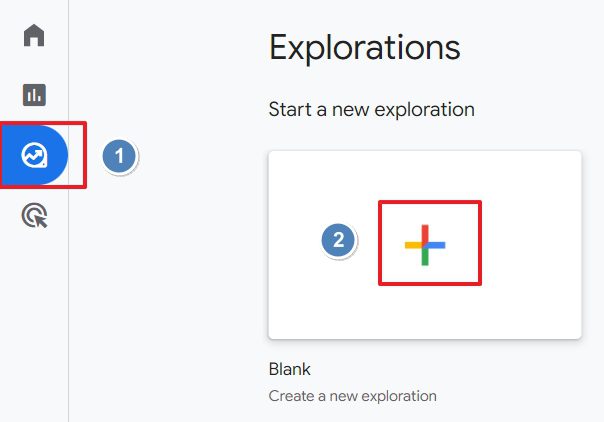
Click “Explore” in the left menu and select “Create a new exploration.” Choose the Blank template.
Step 2: Name Your Exploration
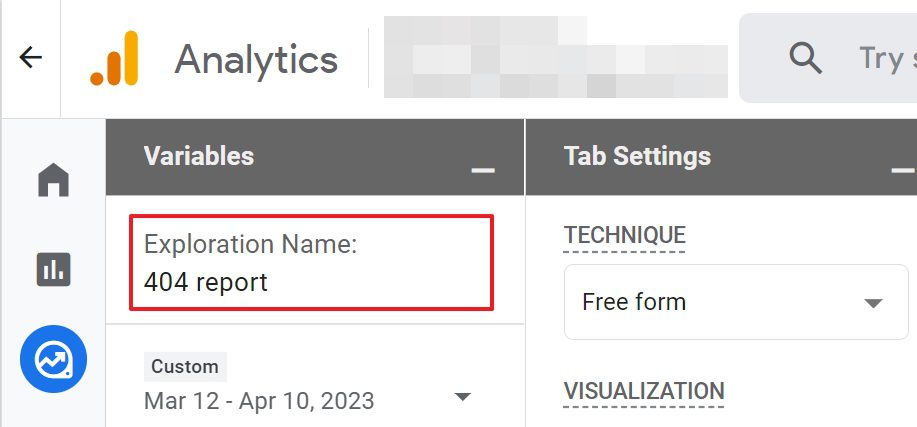
Assign a name to your exploration, such as “404 report.”
Step 3: Add dimensions
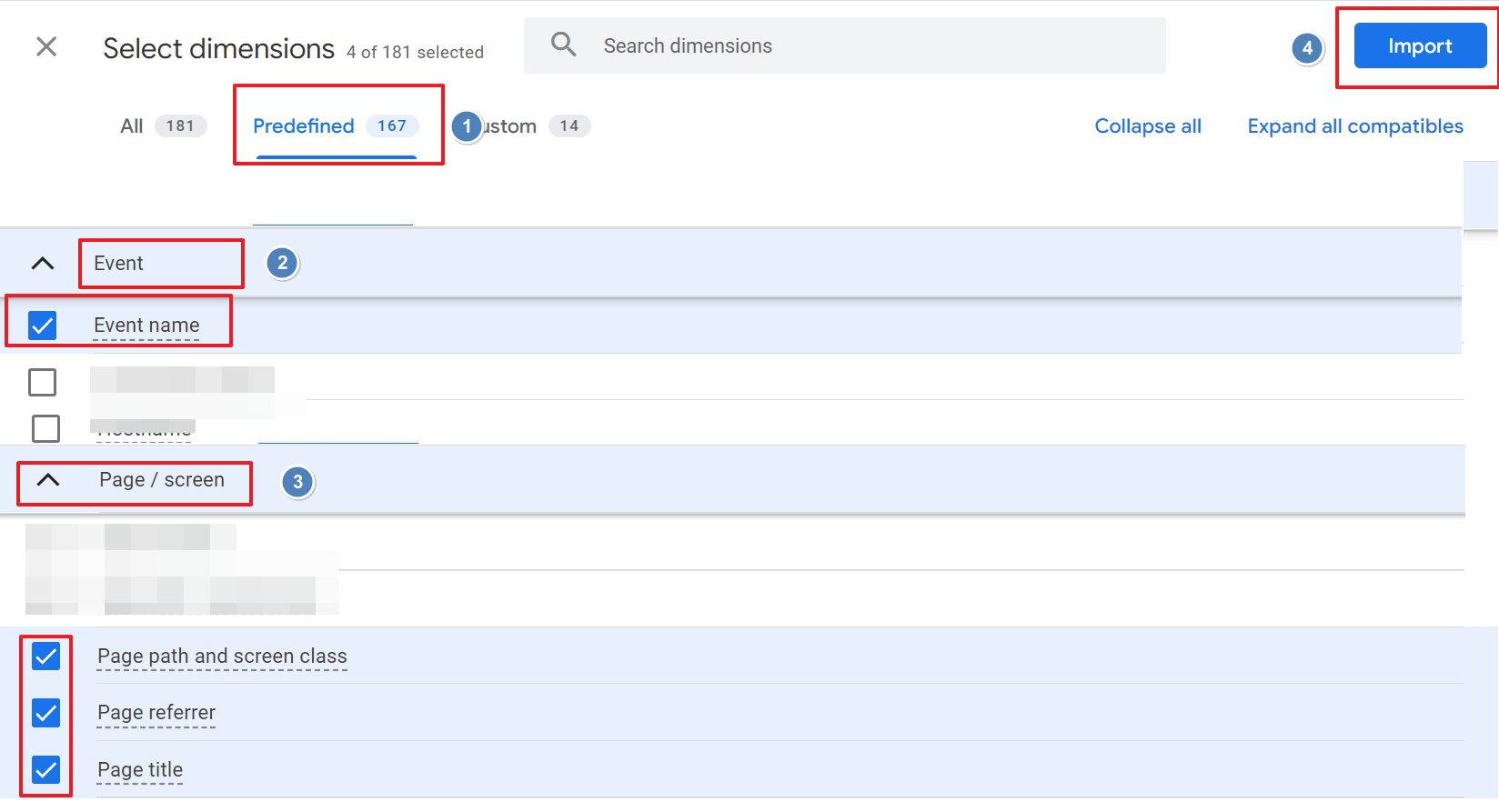
Click on the + sign to add dimensions. In the Predefined tab, select the following dimensions under Page / Screen and Event:
- Page path/screen class
- Page referrer
- Page title
- Event name
Click the blue Import button to add these dimensions to your exploration.
Step 4: Create Rows
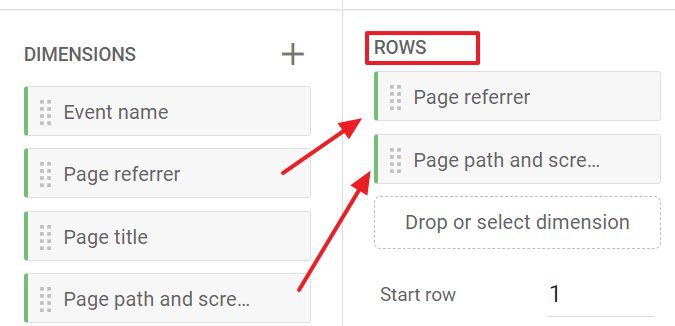
Drag the dimensions “Page Path and screen class” and “Page referrer” to the Rows box in the Tab settings panel.
Step 5: Add filters to the exploration
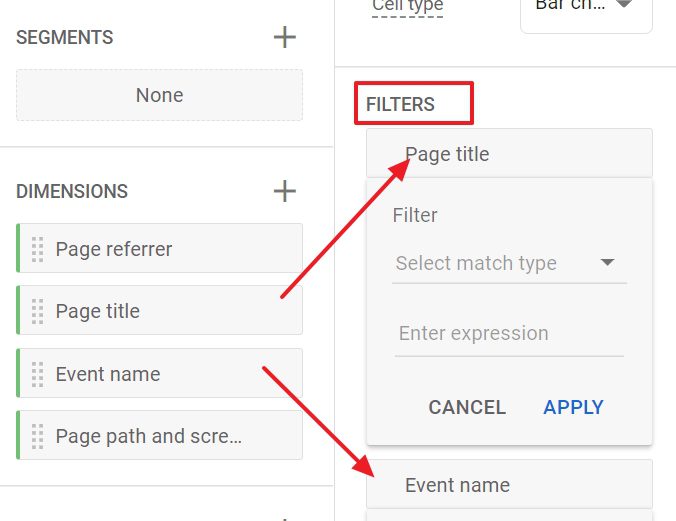
Drag the dimensions “Event name” and “Page title” to the Filter box in the Tab settings panel.
Step 6: Configure the filters
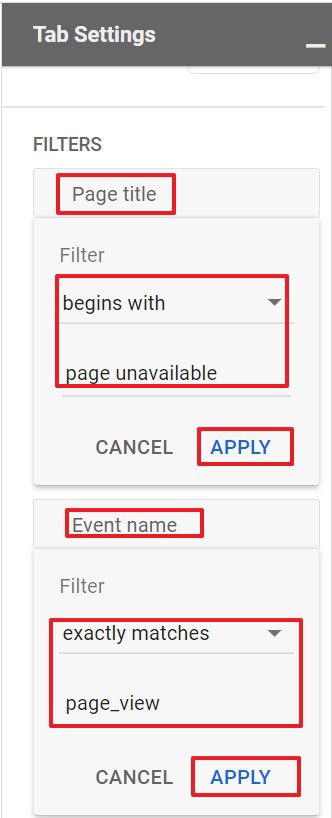
- For the Page title filter, use values related to your 404 page (e.g., Page not found, Page not available, Error 404). For the Event filter, use “exact match” and “page_view.”
Click Apply under both filters.
Step 7: Add the Event Count Metric
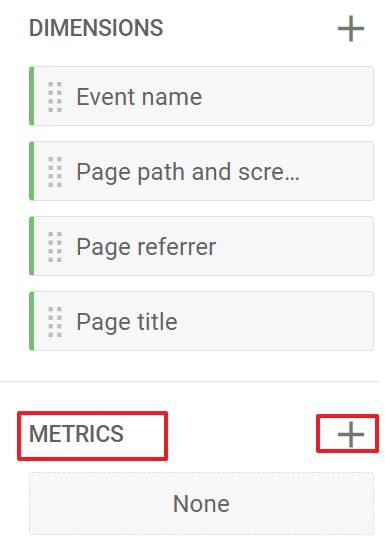
Click on the plus sign in the Metrics field of the Variables panel.
Step 8: Import the metric to the exploration
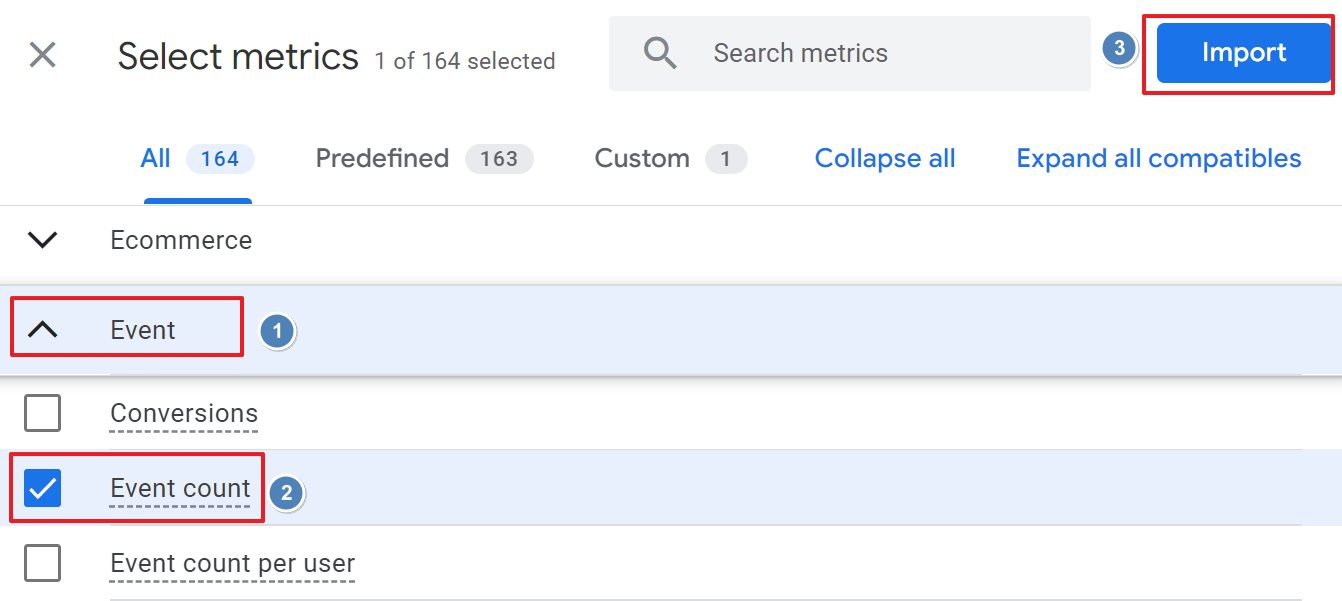
Select “Event count” under Events and click the blue Import button.
Step 9: Drag the metric to values box

Drag “Event count” from the Metrics box in the Variable panel to the Value box in the Tab settings panel.
Your 404 exploration is now set up. If no data appears, it may indicate an error or that no one landed on a nonexistent page during the selected date range.
Monitoring and managing pages with 404 errors in GA4 are relatively straightforward. The challenge lies in identifying and prioritising issues, requiring a holistic approach.
Now, it’s time to put on your holistic goggles and gain insights into your website’s performance.

How to Utilise the 404 Error Report in GA4?
To effectively address 404 errors, understanding their causes is crucial, and there are three reasons behind them. However, you have full control over only one.
Let’s delve into each reason and explore how to handle them.
Internal broken links
Internal links pertain to pages within your domain(s). If the URL of a linked page doesn’t exist, it triggers a 404 error on the server. The GA4 exploration provides insights into pages containing these broken links. Use the “Link domain” filter and select your domain to identify potential issues. Once identified, visit the page and inspect all links to find and fix the broken one.
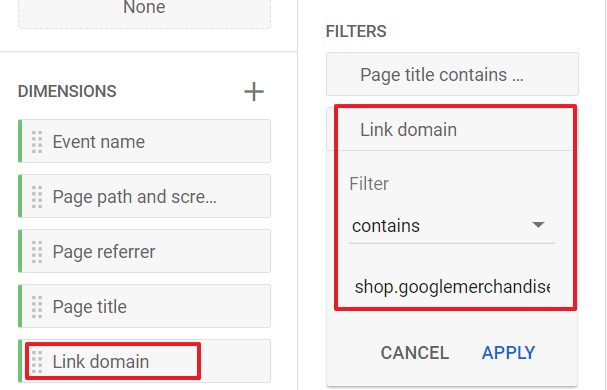
Pro Tip: Speed up the process with browser extensions, plugins, or online broken link detectors. Some tools proactively monitor your site and alert you to broken links.
GA4 logs these errors when they occur, offering a reactive approach. For a more proactive stance, Google Search Console is also valuable, sending email notifications when errors occur.
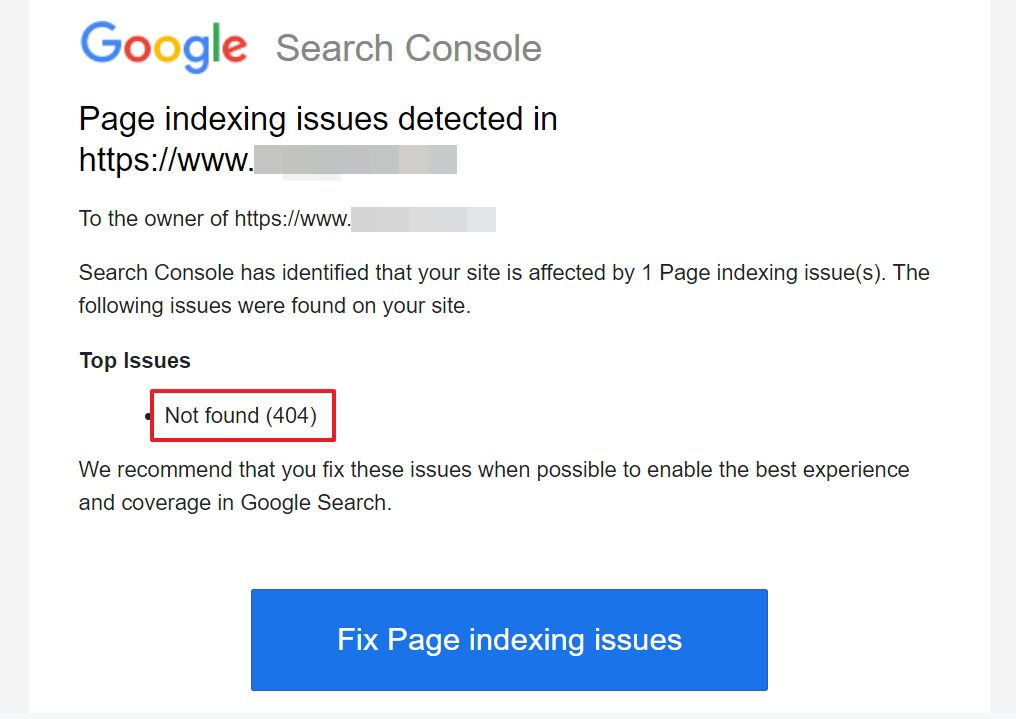
External inbound broken links
External links originate from other domains; unless you own or control them, fixing these broken links is beyond your control. This includes links in emails, PDF files, etc. In GA4, you can track these with UTM tags. Assess the impact based on the traffic source or the site linking to your page.
- Meh, so what? Links from low-authority domains may not significantly impact traffic or SEO.
- OMG. Links from search engines or social media platforms can be crucial for traffic and SEO.
User errors in URL
Users typing in URLs can lead to 404 errors, especially on smartphones, where mistakes are common. While you can’t entirely prevent these errors, adopting good URL practices can help:
- Avoid mixing capitalisation in URLs.
- Prefer hyphens to underscores.
- In GA4, these errors typically lack a page referrer.
Remember, understanding and addressing these 404 errors contributes to a more seamless user experience and overall website health.
How to fix error 404?
Addressing error 404 involves three distinct methods, and the optimal solution depends on the size of your site and the underlying cause of the error.
1. Remove the link
While seemingly straightforward, removing the link may not always be the best option. Consider the following:
- You must have the authority to remove the link. If it’s on a platform you don’t control, you rely on others to take action.
- A button without a link can lead to user frustration.
- Internal links contribute to SEO, and removing them may impact the ranking of other pages.
2. Change the link
Changing the link is the preferred option when:
- The URL contains a typo (e.g., www.yourcoolandgreatwebsite.com/contakt).
- The target page no longer exists. Look for a closely related page and consider altering the anchor text.
- Your site is not extensive, or the error is limited but significant (e.g., landing pages for paid campaigns).
Changing the link may be challenging if others are responsible for the incorrect link, such as on social media.
3. Redirect the page to another page
Using a 301 redirect is an efficient solution when:
- The target page was permanently removed.
- Your site is extensive, with numerous links pointing to the non-existent page.
- The original page was ranked in search engine results.
Damage control
Despite your efforts, some 404 errors are inevitable. Implementing damage control measures includes:
- Using a dedicated 404 page instead of default ones or redirects to the home page.
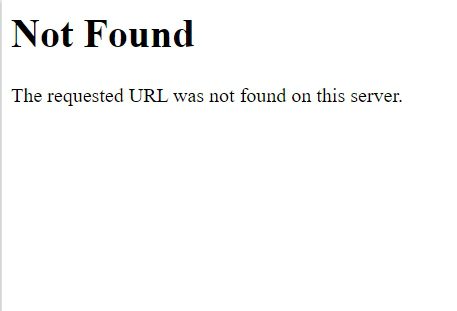
- Displaying a message explaining to users that the page is not found, doesn’t exist, or is unavailable.
- Providing an easy option for users to find the content they were looking for, such as main site sections, a sitemap, or a search box.
Useful FAQ
Does GA4 track 404 errors on other sites?
GA4 doesn’t track 404 errors on external sites you link to. While enhanced measurement can track clicks to external domains, it doesn’t help identify 404 errors on those sites. Regularly checking external links is advisable to ensure a positive user experience.
In essence, fixing error 404 involves a tailored approach based on your site’s size, the cause of the error, and your ability to control and modify links.
Final note on 404 and GA4
While GA4 is just one tool among many for identifying and monitoring 404 pages and errors, setting up this exploration in GA4 can still be beneficial. Here’s why:
- Accessibility for Your Team: Not everyone on your team may have access to all the website monitoring tools. Creating the 404 report in GA4 provides an additional, easily accessible monitoring tool for everyone.
- Free Monitoring Tool: Despite more reliable tools designed explicitly for tracking pages that are not found, using GA4 for this purpose is a cost-effective option. It serves as an additional layer of monitoring without incurring extra expenses.
- Customisation with Dimensions: You have the flexibility to enhance the 404 exploration by adding other dimensions. This customisation lets you focus on broken links with the most significant impact or track 404 errors over time, tailoring the analysis to your needs.
- Team Collaboration: GA4’s exploration reports can facilitate collaboration within your team. Sharing insights and analyses regarding 404 errors becomes more accessible using a commonly used platform like GA4.
In conclusion, while more specialised tools are available, leveraging GA4 for monitoring 404 errors provides a practical and accessible solution for teams, promoting collaboration and compelling analysis. If you’ve found this information helpful, the DDU team and I are delighted. Feel free to reach out if you have any further questions or need assistance. I’ll now take my leave.


